As employers welcome workers back to the office, many are seeking to create more enjoyable workplace environments—and are willing to pay more for space in premium, amenity-filled buildings. The return-to-office from COVID-19 has accelerated the trend of developers refreshing legacy office buildings in central business districts.
Repositioning these properties to compete in the modern work environment requires creating many new amenities—indoors and out—for the people who work in these buildings as well as the public.
For developers looking to breathe new life into aging properties and attract tenants who may be hesitant to return to “the same old office,” revitalizing existing outdoor plazas adjacent to these buildings can bring great value. Outdoor workspaces, which enhance people’s health and wellness, are in high demand. Building tenants also are looking to feel more connected to neighborhood retail, amenity and meeting spaces.
The challenge is that many urban office towers were originally designed almost as citadels. The purpose of the plaza was to separate the tower from the streetscape and create a formal entryway to the building.
Our approach for redeveloping these plazas flips that dynamic, taking a space that had been empty and uninviting and giving it back to the public realm: inviting people into the space rather than signaling them to stay out.
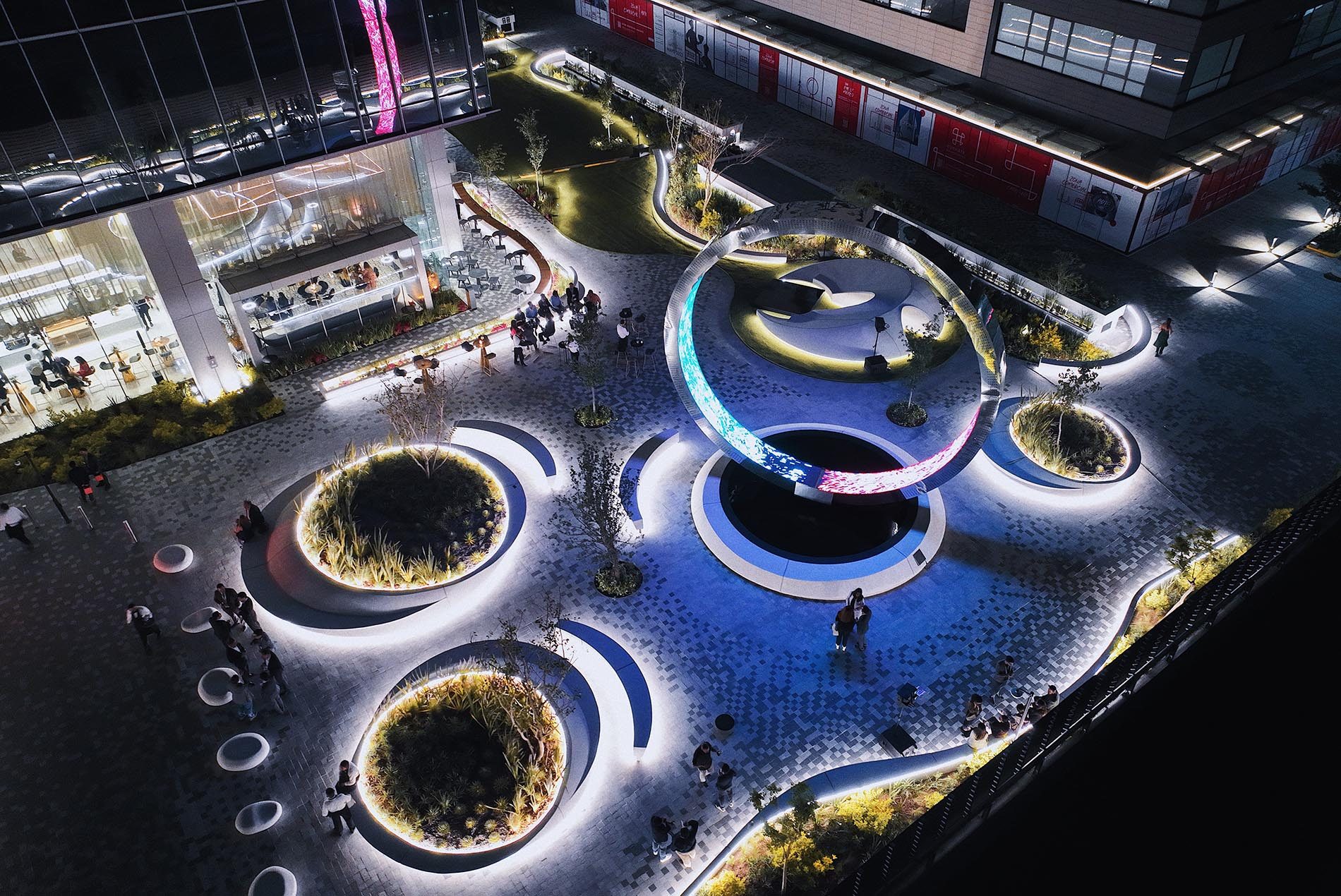
Injecting new energy into previously underutilized, uninteresting places encourages the type of interaction among office workers, residents and visitors that is so critical to healthy, vibrant cities.
Integrating the space into the public realm gives it civic identity and purpose and contributes to the broader open space fabric of the city. It creates a place that people enjoy and take pride in. When people feel welcomed and excited to be in a space, they take ownership and are more mindful about keeping it safe.
Adding Amenities and Community Connections
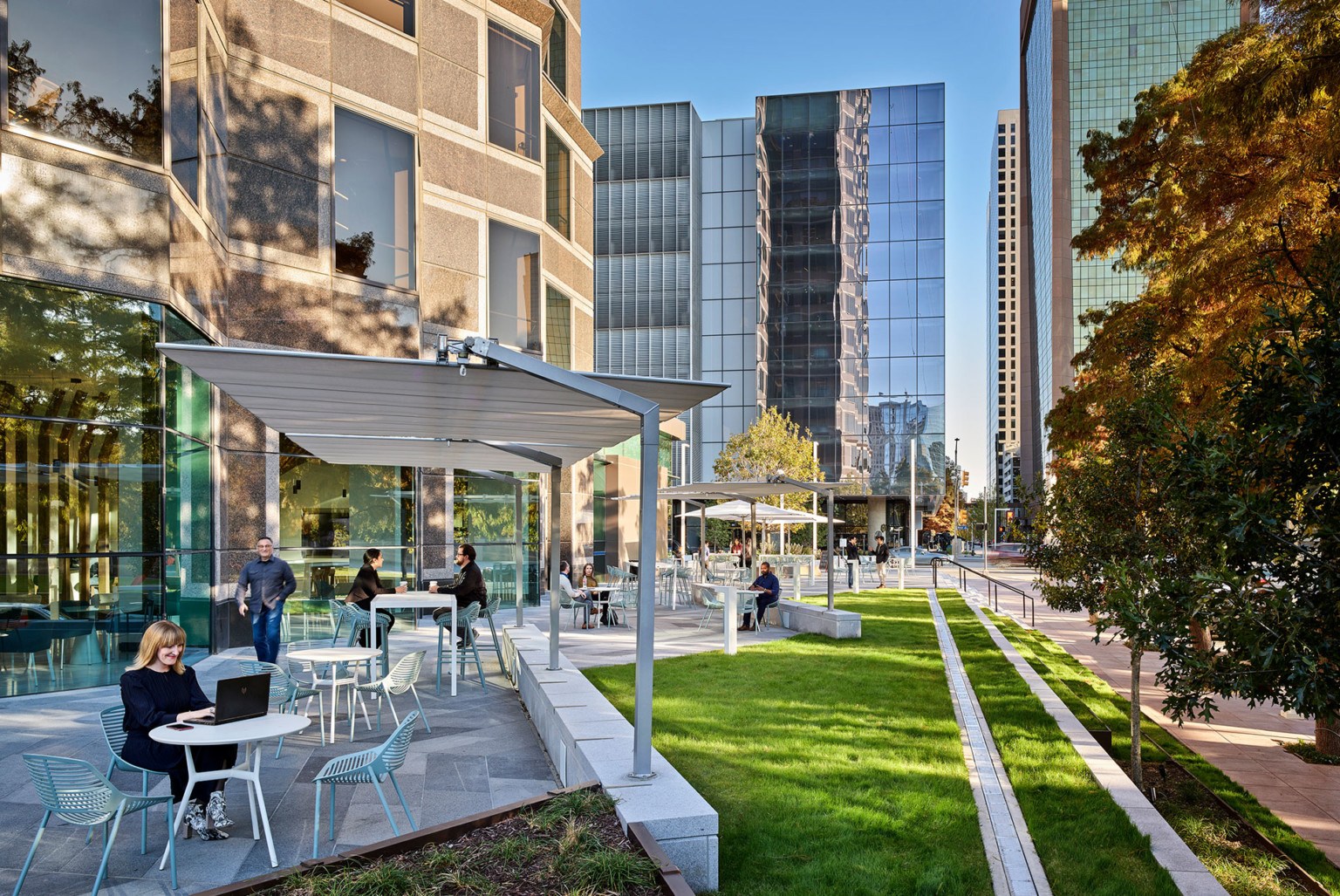
It’s fairly simple to create visual interest by giving an outdoor plaza a facelift. But the best plaza redevelopment projects succeed because, in addition to enhancing the landscape, they create new amenities and community connections.
An important goal for these projects is to create a sense of openness and synergies between the building and the urban context. People don’t want to spend their days in an isolated building. They want to feel like they’re part of something bigger.
Adding retail to a building plaza or lobby—especially food and beverage options—plays a huge role in activating a place. The once empty plaza becomes a destination to meet up with coworkers or friends.
Plazas that are in more active areas, such as near transit stations, can add amenities that appeal to those users and draw people in throughout the day. Urban designers can ensure that people of all abilities can comfortably and safely move through the plaza and, when possible, integrate the space with existing bike lanes. Lighting, wayfinding and accessible design considerations also make spaces more inviting for everyone.
Elements of Vibrant Plaza Spaces
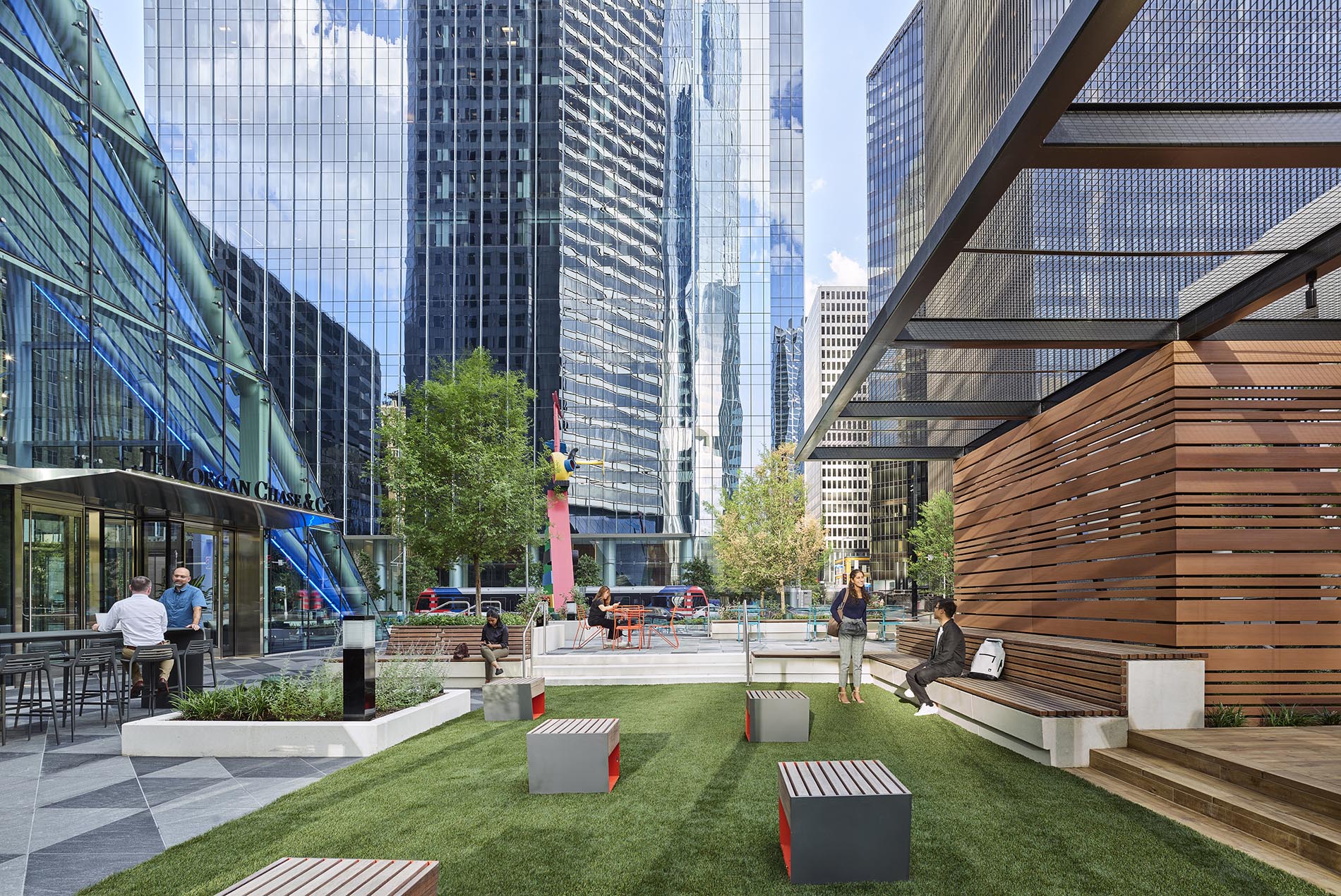
To create a pleasing space, outdoor plazas need to be interesting, comfortable and at times surprising. Designers can achieve this through:
- Diversity of uses: We activate outdoor plazas by appealing to as many users as possible. One approach is to create a floor plan for the space with designated outdoor rooms that engage people. These may include areas for lunch or outdoor meetings, a variety of seating options, lawns where people can sit or kids can play, public art and even chess boards.
- Texture: Investing in high quality materials like wood, stone, plant material and metals elevates people’s experiences. Concrete and ornamental grasses alone will not engage the public.
- Introducing greenery and shade, especially in warm-weather climates.
- Designing interesting and thoughtful lighting keeps a space activated and safe at night and makes it a desirable location for nightlife tenants like bars and restaurants.
- Being strategic about sound, both to filter out surrounding noise and for interest. Hidden, embedded elements can play music.
- Adding pleasing scents: From plants, food or even air freshener spritzers.
- Providing reliable internet access so the space can act as a true extension of the office. This also keeps people in the space.
Rejuvenating Houston’s JPMorgan Chase Tower
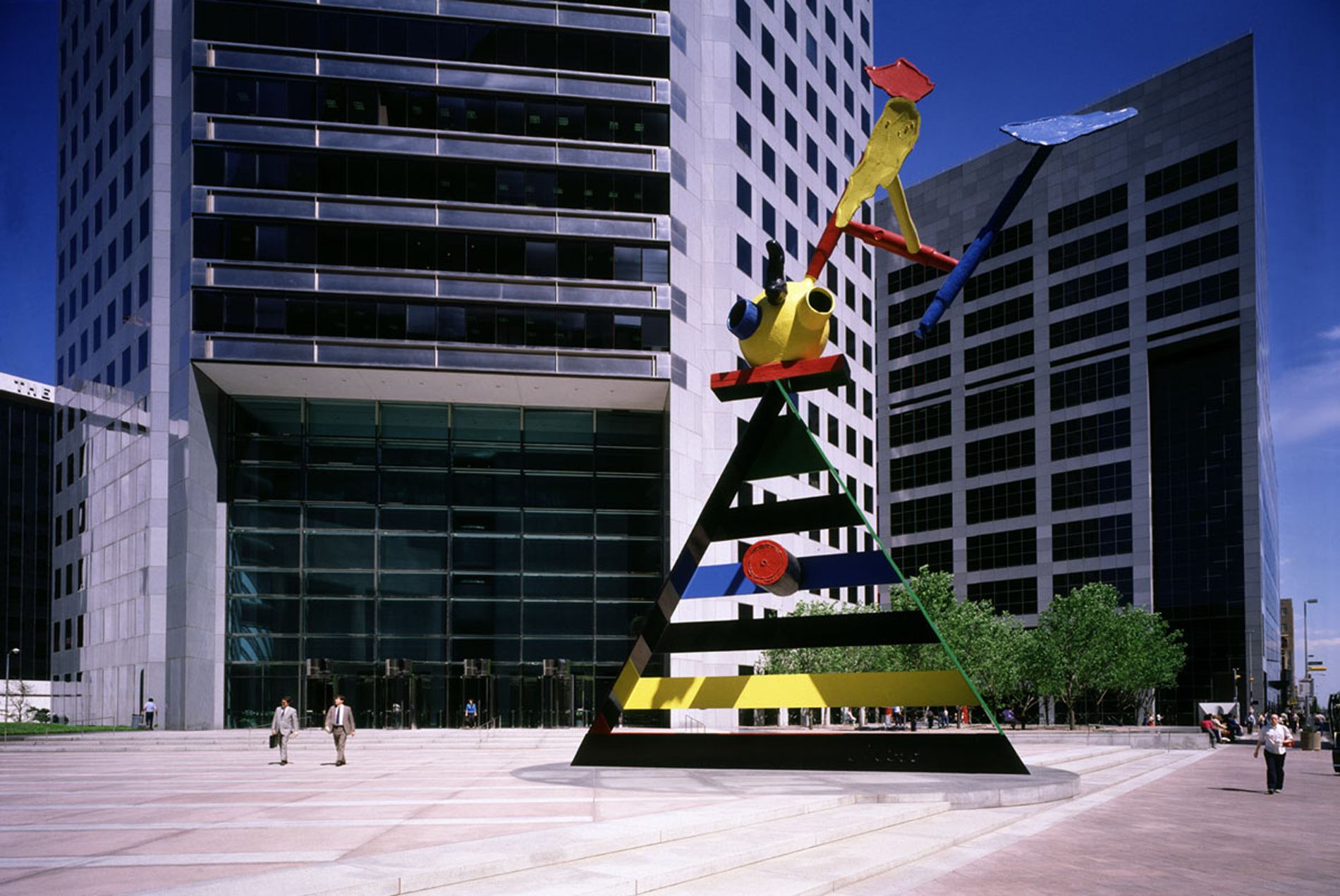
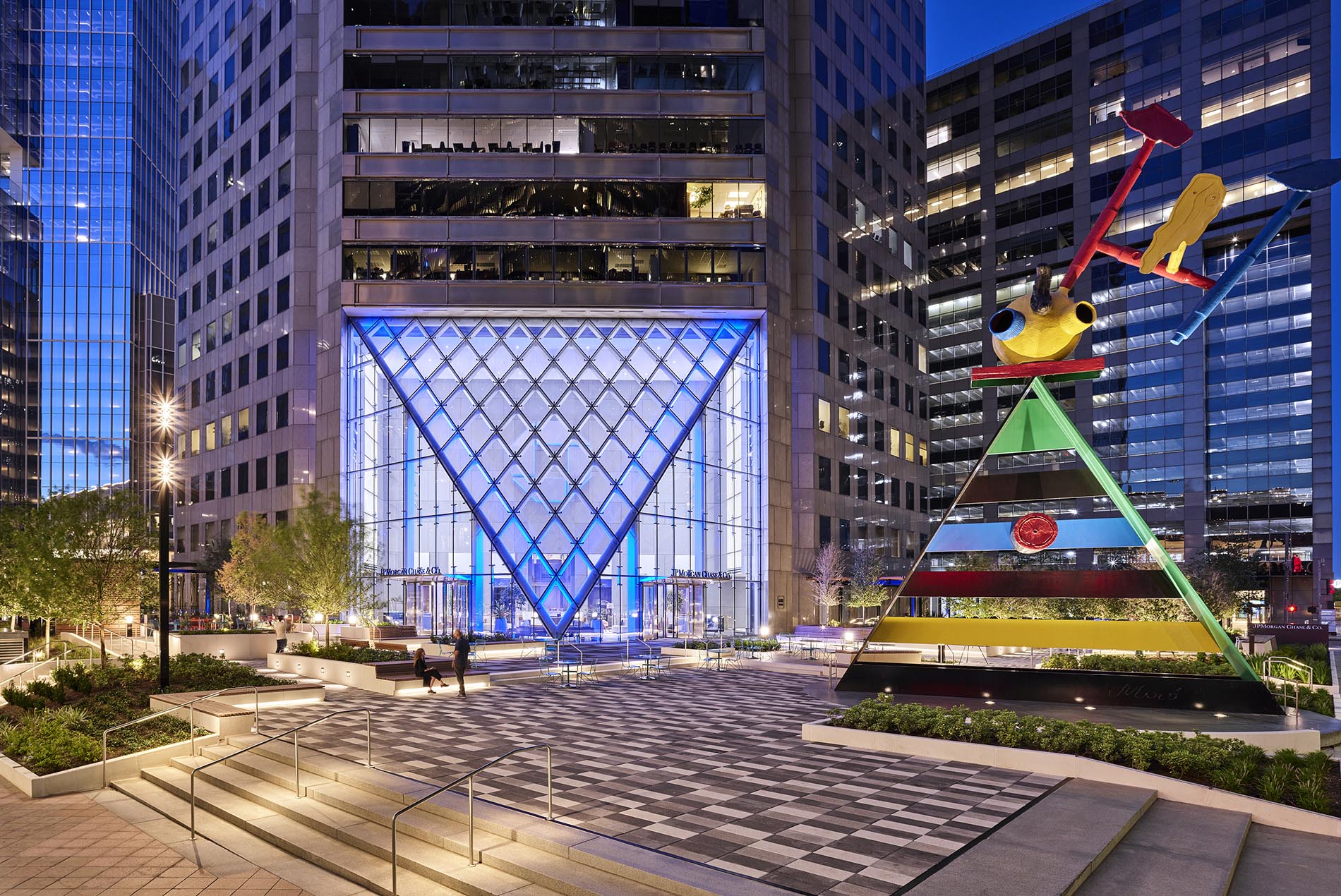
The newly redeveloped outdoor plaza at the JPMorgan Chase Tower is the latest jewel in Houston’s growing network of downtown public spaces and contributes to the creation of a more vibrant, walkable city. It’s a welcoming oasis within the urban landscape.
As part of a project to reposition Texas’s tallest building, Hines asked HOK’s team to re-envision its vast exterior plaza and entry experience. The existing plaza at the 75-story JPMorgan Chase Tower (formerly 600 Travis), home to the largest Joan Miro sculpture ever commissioned, “Personage and Birds,” lacked amenities and visual interest. It also had no connection to downtown Houston’s streetscape.
The design transforms this underutilized plaza into a vibrant urban garden that optimizes its proximity to downtown’s historic, cultural and transit offerings. A series of outdoor rooms feature comfortable shade and lush plantings. Reducing the hardscape and introducing green, permeable features reduces the urban heat island effect.
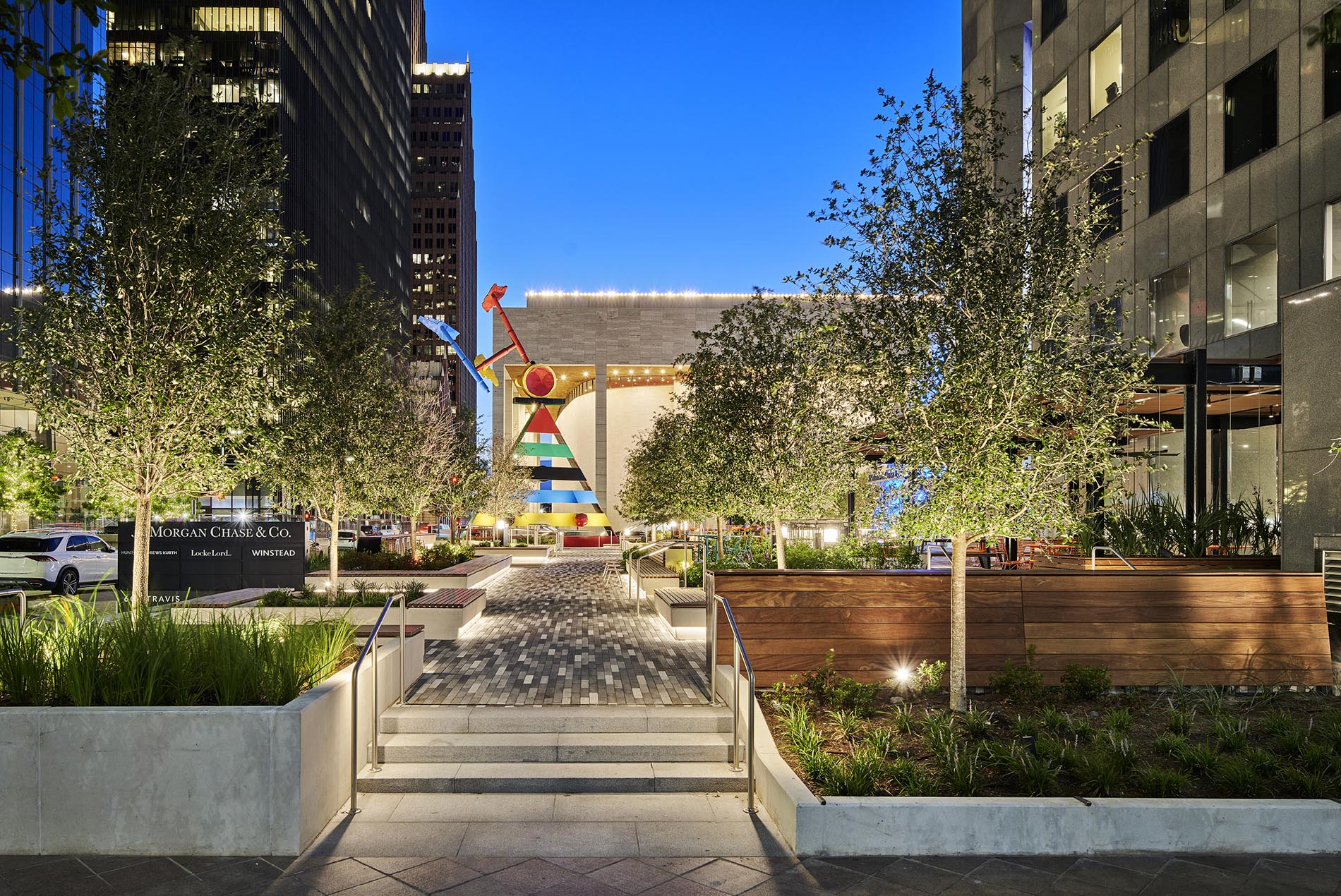
With dedicated wireless internet service and intimate, human-scaled gathering areas, the plaza acts as a true outdoor extension of the tower and a destination for workers, residents and visitors. Versatile seating options allow people to find a place for a meal with friends, a collaborative session with colleagues or solo contemplative time.
New trees and trellises add shade to seating areas, providing shelter on sunny days and ensuring a lively, green environment throughout the year.
A rich variety of textures are introduced through the vibrant planting palette, contrasting unit paving with geometric designs and the warm, wood-lined planters, benches and screen walls. Two small, synthetic lawns add softness for sitting or game play. Cactus species including yucca and prickly pear, which thrive in bright sun, create a botanical garden experience that enhances the visual appeal.
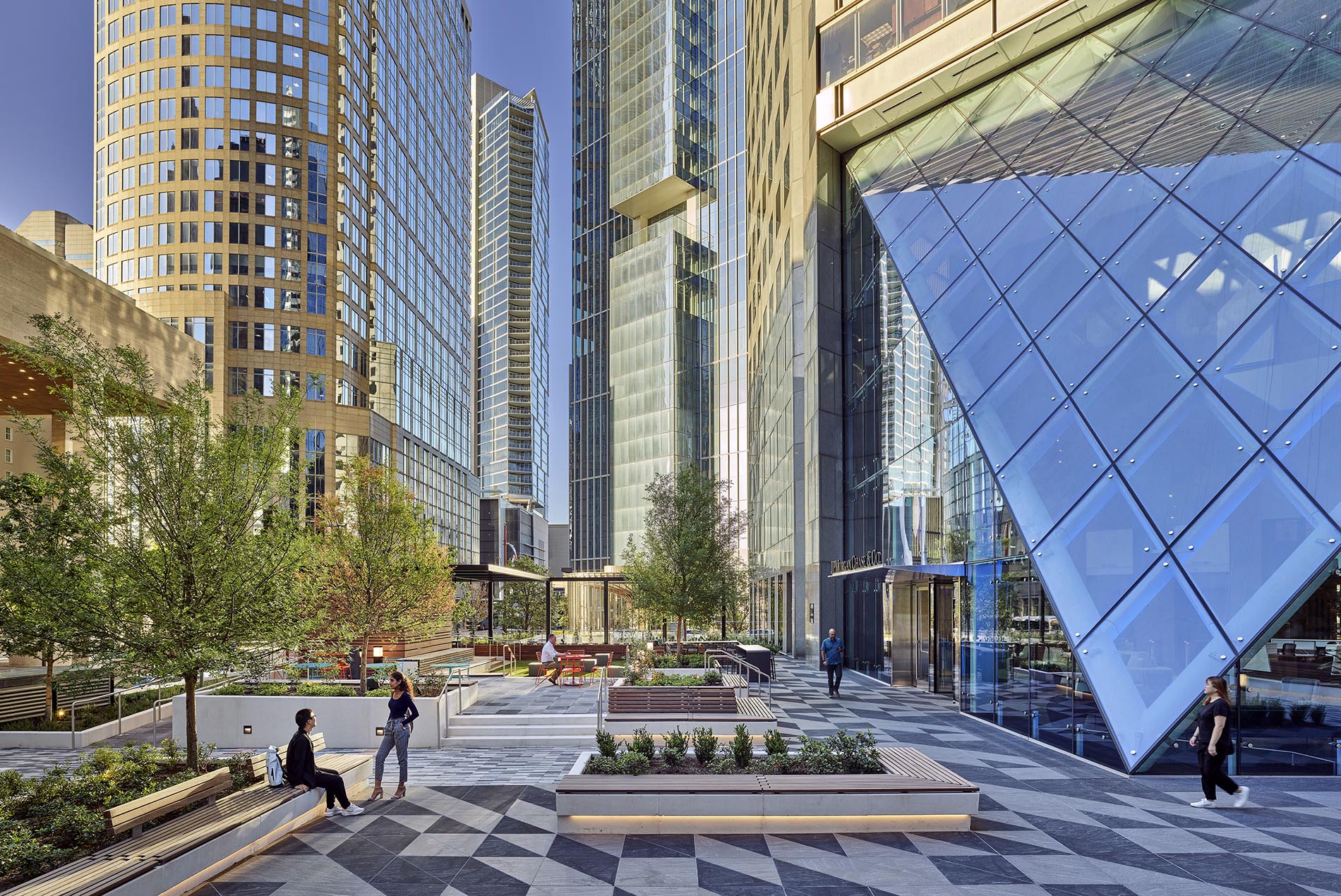
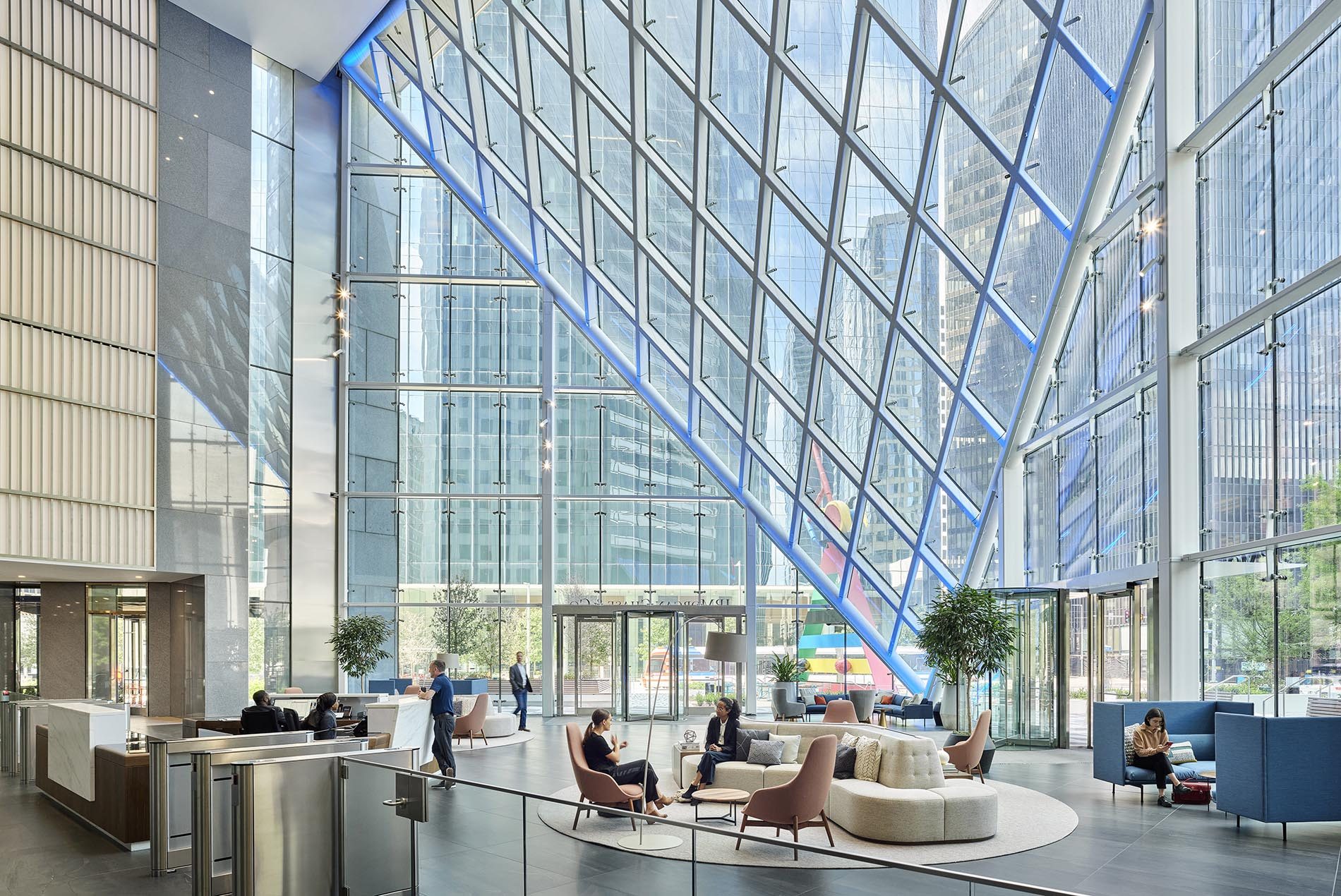
In a tribute to the building’s iconic history and original architect, I.M. Pei, the reimagined plaza and renovated lobby meet at a new glass pyramid entry inspired by the Louvre Museum in Paris. As visitors approach the lobby, custom stonework with a triangular motif sits at the base of the pyramid to elevate the arrival journey and designate the formal entryway to the building. The trapezoidal glass pyramid draws in sunlight and biophilic qualities to brighten the redesigned interior.
In addition to creating a desirable indoor-outdoor work environment for the tower’s tenants, the public-facing design of the new plaza keeps the space activated on nights and weekends.
Restoring the Prominence of the Trammell Crow Center in Dallas
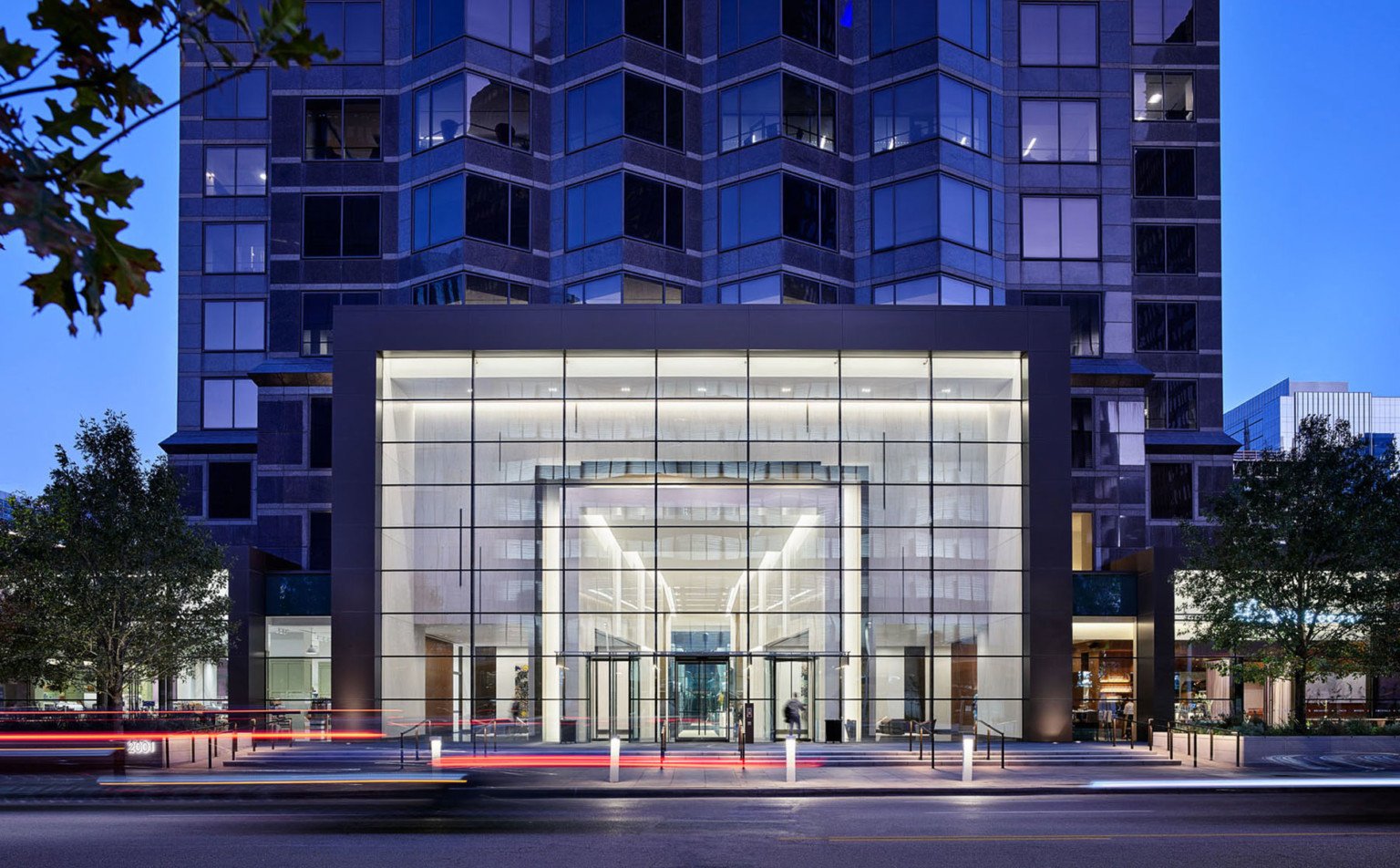
HOK collaborated with J.P. Morgan Asset Management and Stream Realty Partners to restore the prominence of the 50-story, postmodern Trammell Crow Center. Regent Properties recently acquired the building, which opened in Dallas in 1985 as the city’s premier office address.
Since the iconic tower was built, Dallas’s central business district has evolved into a more vibrant, pedestrian-oriented setting. The design team was challenged with transforming the property into a cornerstone destination for the city’s neighboring Arts District.
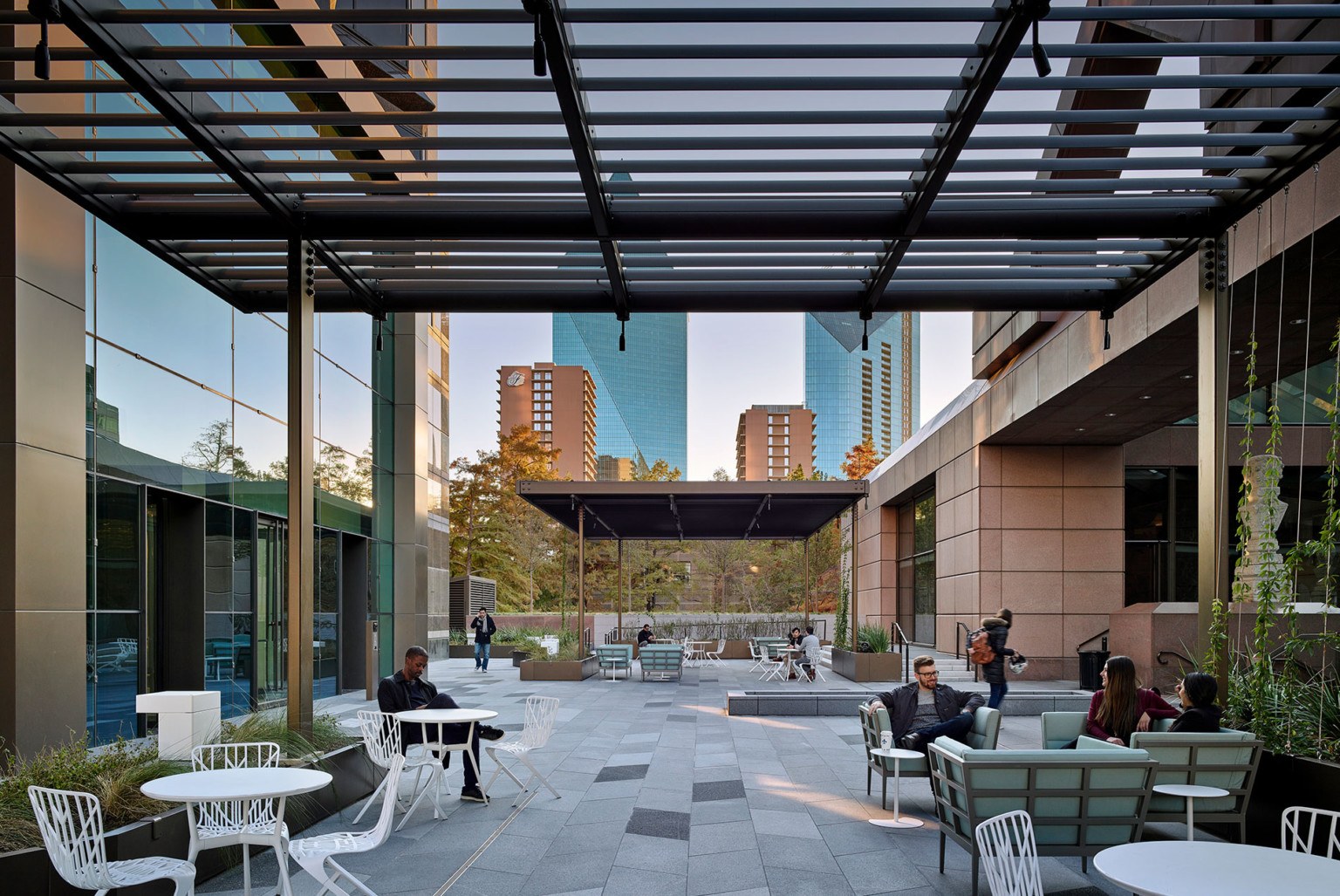
In addition to a complete makeover of the building’s first two levels (facade and interior spaces), the project included reimagining the entire plaza around its base into 1.4 acres of revitalized outdoor gathering space. The design converted a closed-off garden into an open site that is much more connected to the adjacent Arts District and commercial spaces.
New outdoor spaces surround the building. The site provides a variety of settings activated by lots of shaded seating and a large green space for community and tenant events. This newly energized building base blurs the boundaries between inside and out, as well as between the site and streetscape. A ground-floor social workspace with dining areas and outdoor seating welcomes tenants and the public.
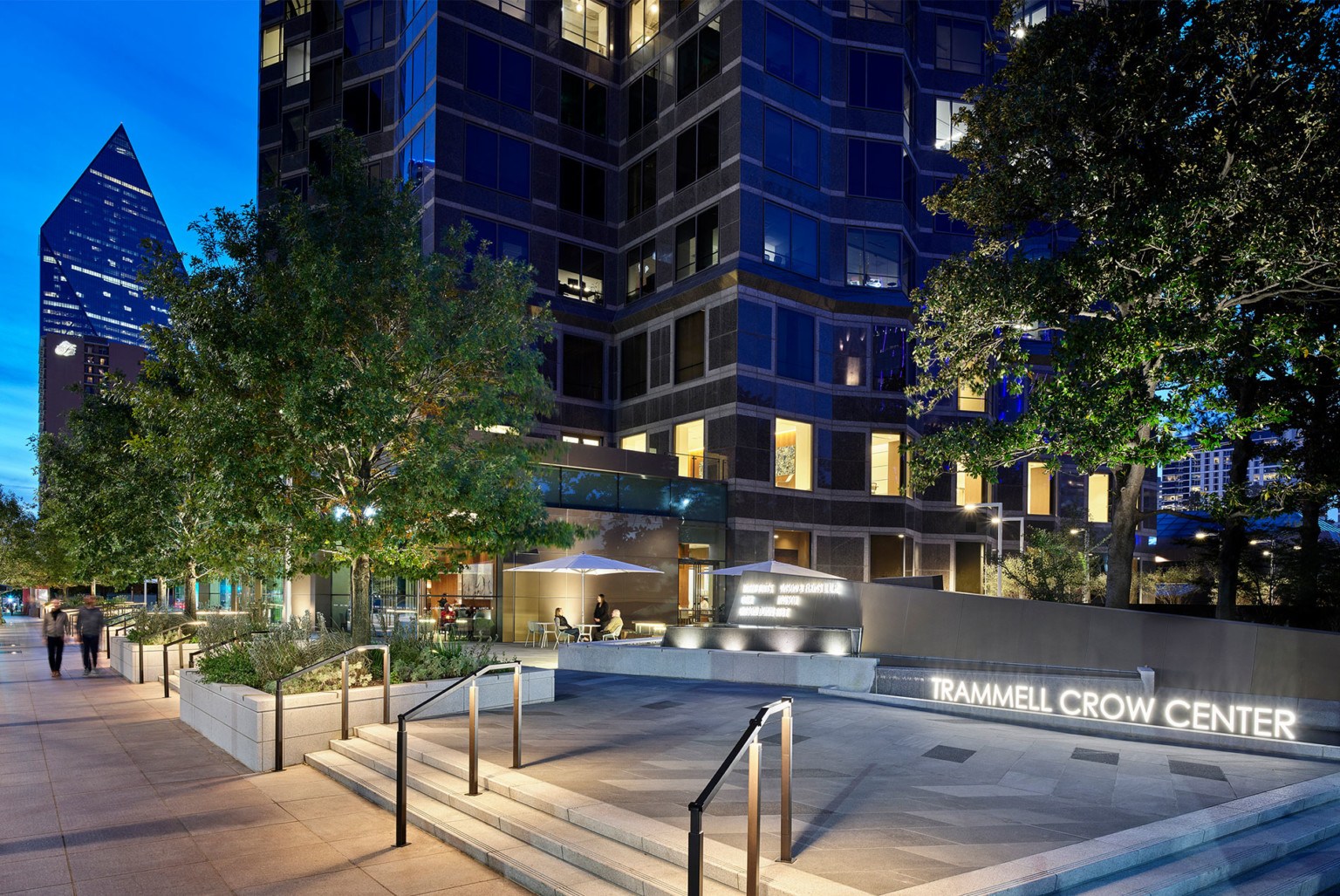
New Life for 1771 N Street NW in Washington, D.C.
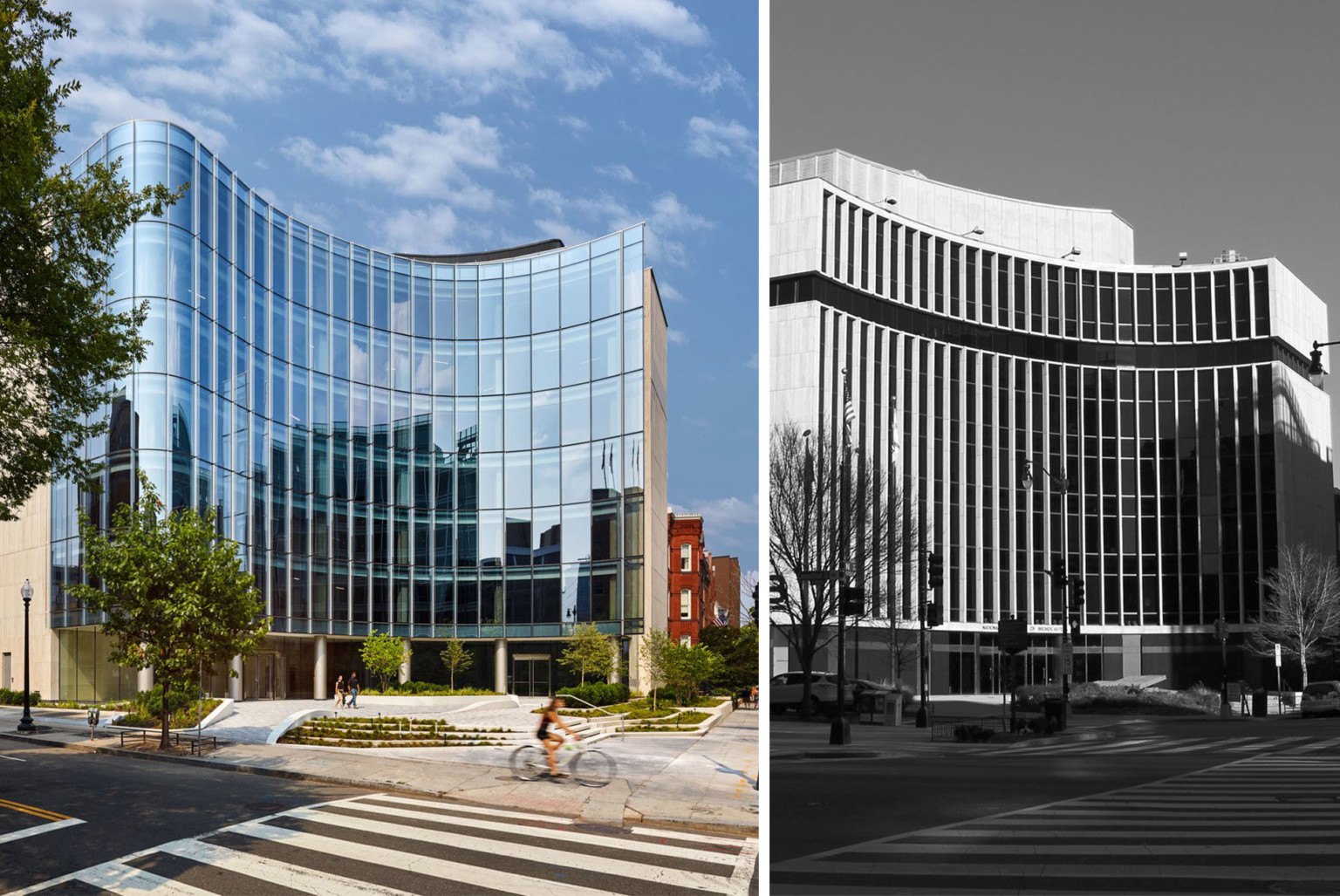
Located in the historic Dupont Circle neighborhood, the 1771 N Street NW office building opened in 1967. In another collaboration with Stream Realty Partners, an architectural restoration and new plaza design has renewed this urban landmark into a contemporary, sustainable space.
The existing plaza was a sea of paving with no seating, no tree cover and a large fountain that walled the plaza off from the public realm. The design focused on opening the plaza, which sits atop a parking garage, to the street and freeing up space along the curved facade for plantings and gathering areas.
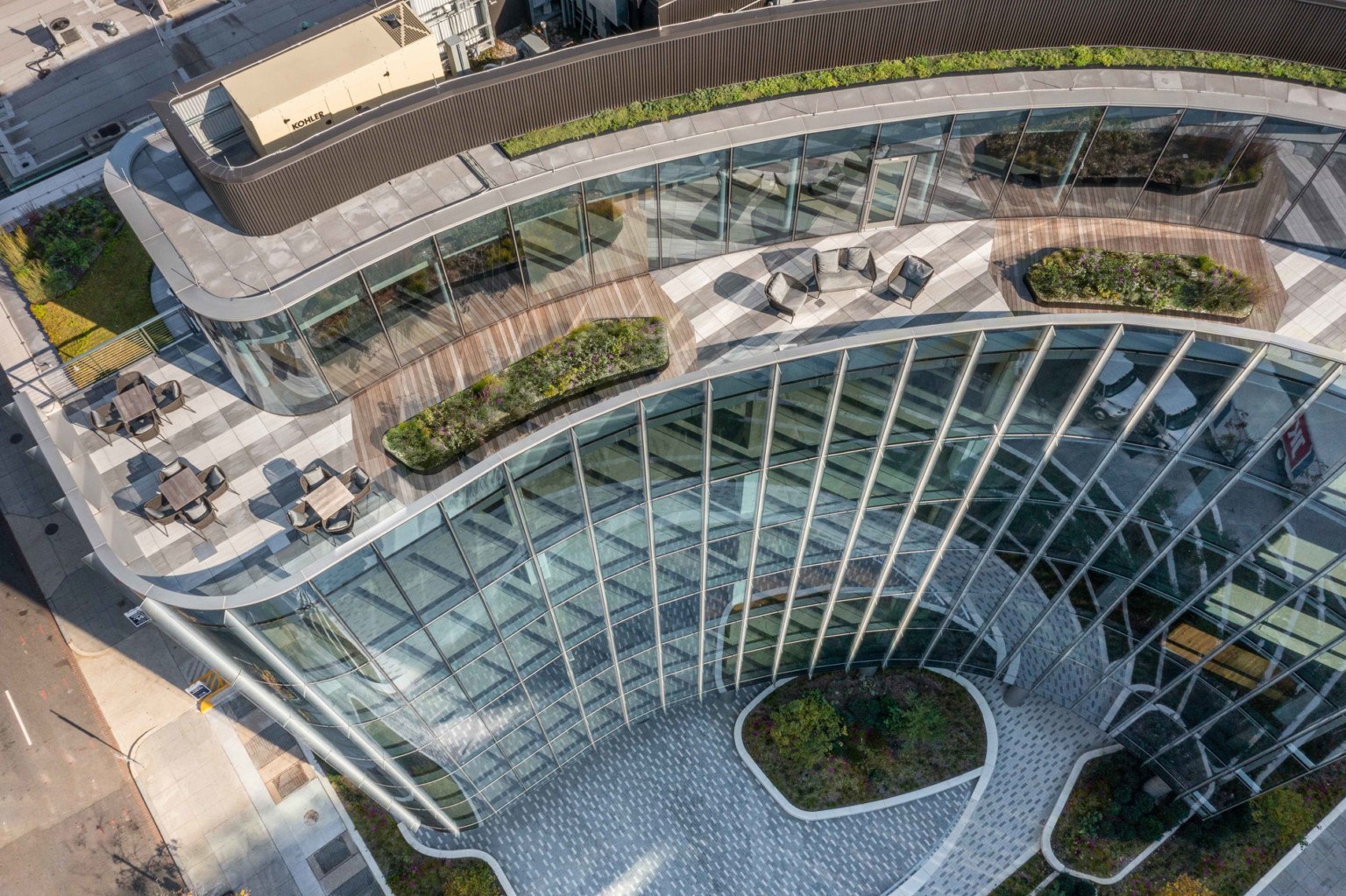
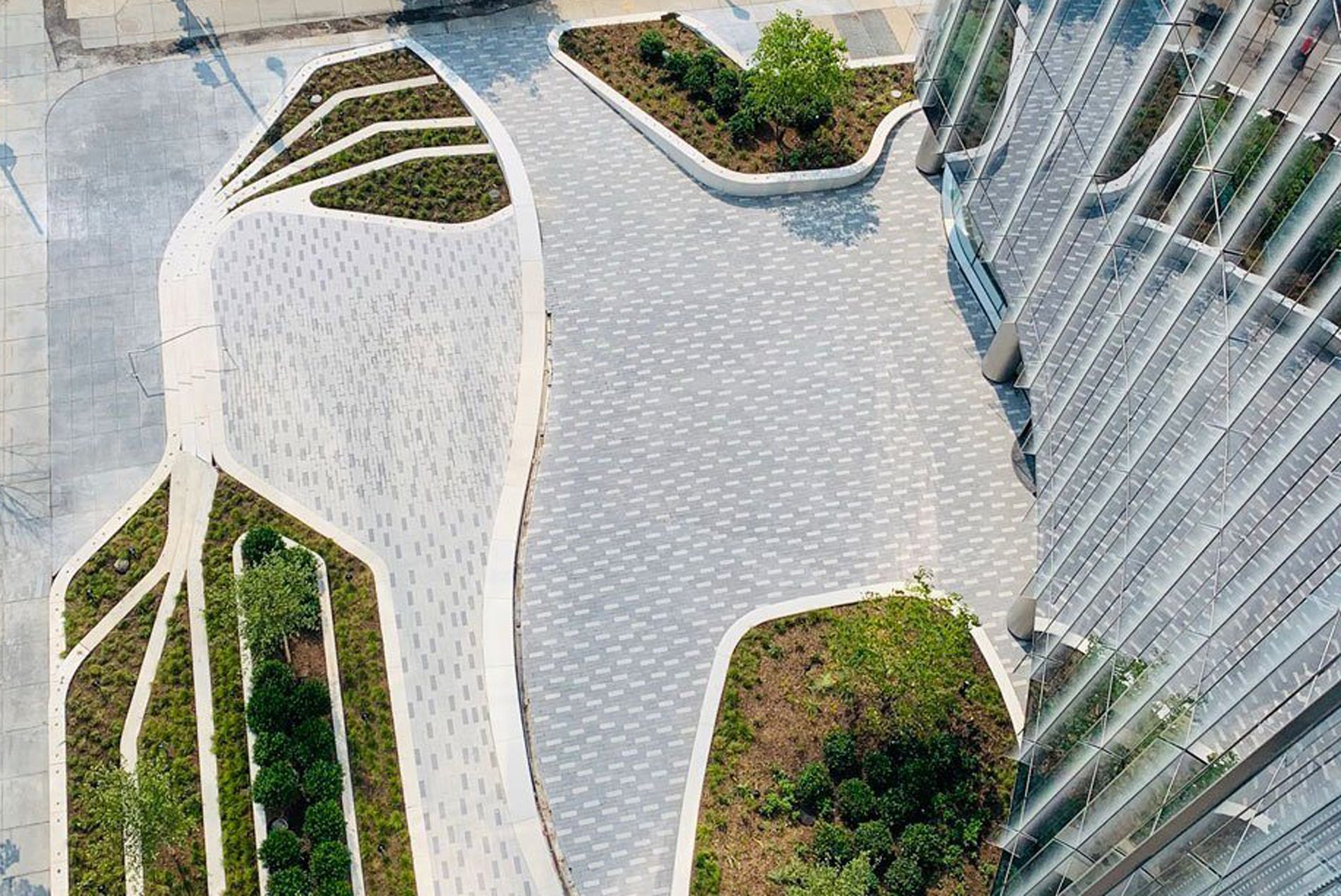
The new plaza creates human-scaled spaces akin to “rooms in a garden,” shaded by trees and enhanced by natural materials. Prioritizing openness to the street, the design balances the privacy needs of tenants with the creation of a welcoming, semi-public space that takes advantage of the site’s prominent location.
A serpentine ribbon that mirrors the building’s curved glass facade meanders throughout the plaza, taking form as planters, seat walls and walking surfaces, and inviting passersby in to enjoy a few moments of respite. The plantings are positioned to funnel visitors toward the main lobby while providing a privacy veil for ground-floor offices.
The spacious, tiered open areas promote accessibility and flexibility for large-scale events, providing room for removable tables or seating. The additional green space improves the site’s stormwater management and resilience.
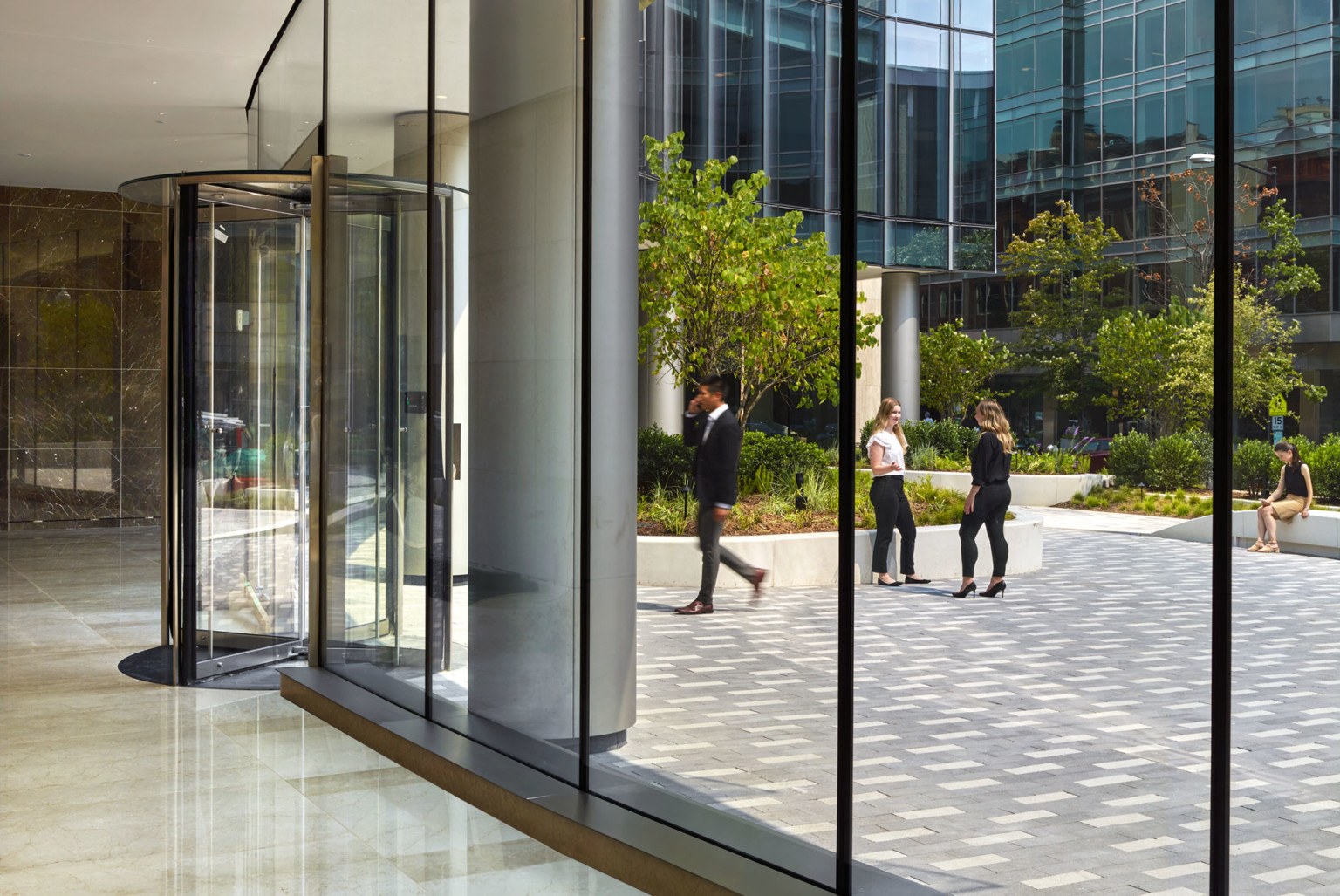
The building’s glass curtain facade offers unobstructed views from the interior space to the open plaza and neighborhood, helping to draw workers outside to enjoy the space.
Let's Connect
HOK’s team designs public spaces and plaza redevelopment projects all over the world. Please contact Zach Christeson, the leader of the firm’s Planning practice in Houston, at zach.christeson@hok.com with any questions or to inquire about working together.